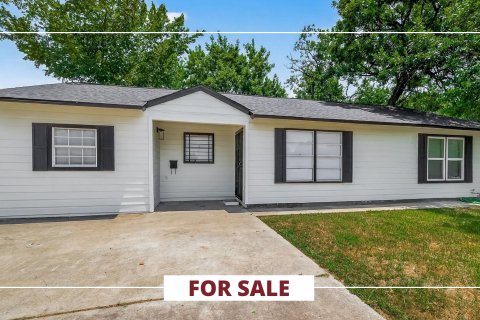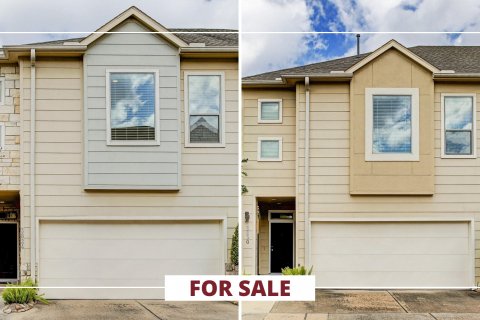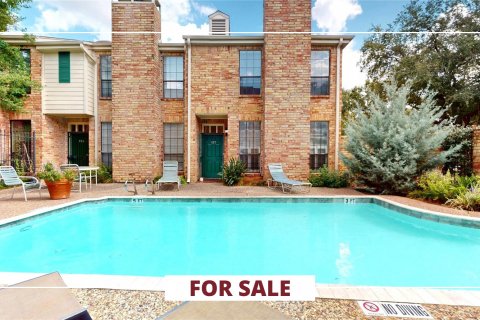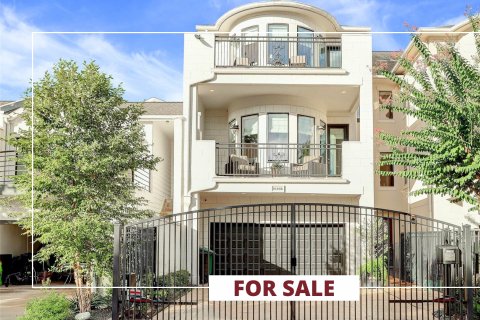Houston’s Most Ambitious New High-Rises — Including an Exclusive Look at a Downtown Stunner: The Next Wave of Super Buildings Arrives – and Raises the Ceiling
BY Chris Baldwin //The large clock in the lobby at Aris Market Square is a homage to the nearby historic clock tower. (Photo by Jenny Antill.)
Vertical Living is no longer some foreign concept that draws perplexed looks in the Bayou City. No one has to sell Houstonians on the advantages of the high life anymore, especially not in the wake of Hurricane Harvey. A flurry of high-rise openings over the last few years made power players from River Oaks to Katy aware of the benefits of this walkable urban lifestyle. It’s not just a New York, or a Los Angeles, or a Chicago thing anymore. It’s become an accepted, sought-after Houston staple, too.
Now, a new wave of buildings is seizing on this to do more. Just having a killer view and valet parking is not enough anymore. Houston’s cloud huggers must truly stand out to make it now. These Next Gen Buildings will change how the city looks at the sky
When it comes to high-rises, most people tend to look up — to gawk at a building stretching toward the clouds. It is instinctive to imagine what life will be like swaddled in a cocoon of sky-high luxury, often literally above it all. This is why Houston’s high-rises are seeing a surge of local interest in the wake of Hurricane Harvey’s historic destruction — this sense of looking up and being able to escape is powerful and almost primal.
William Elser, director at Hines, knows it’s often just as important to look down the hall in his job, though. For these seemingly innocuous corridors can set a tone for a tower, which is really, if one thinks about it, still supposed to be a home first.
“That’s one of the first things Mr. Hines looks at when he tours a building,” Elser says, referencing the founder, chairman and still-very-active 91-year-old vision setter for the company that bears his name. “He looks down the hallways.
“It can’t look institutional. You’ve got to make sure it doesn’t look like you’re in The Shining.”
With that in mind, Elser and the rest of the team orchestrating the development and build of The Southmore, a new 24-story Hines high-rise in the Museum District, made sure that its hallways are not just long rows of doors. Instead, doorways are recessed, distinctive digital wallpaper graces the walls, the lighting is muted rather than hospital glaring, and fresh outside air is pumped in. When you notice a smell in a hall, it’s rarely a good thing — it’s like coming across a used car with “an interesting history.” In this case, the scent is memorably invigorating.
Paying this kind of attention to what many would dismiss as a small thing marks the next wave of high-rises now transforming Houston’s skyline — and way of life. While the first wave of new high-rises have been open for a little while now, a new surge of ambitious buildings that truly sweat all the details is slowly, but surely transforming the market.
Why does every little thing matter so much now? For the answer, many titans of the sky only have to look right across the street.
“It’s certainly an arms race,” David Haltom, director at Hines, says. “Our competitors are putting out some high-quality product too and we need to stay ahead.”
Haltom, who shepherded the newly opened Aris Market Square — Hines’ 32-story downtown tower — to market, only needs to look across Market Square Park to see one competitor, Market Square Tower. Whether it’s downtown, River Oaks District, or the Galleria area, the lines have been drawn — and it’s may the best towers win.
Sitting in his own old school offices near The Galleria, Marvy Finger notes the escalation with a sense of nostalgia. In many ways, Finger is the godfather of the modern high-rise in Houston, with his then-audacious One Park Place heralding a new era with its 2009 opening.
“The demands are so much greater from people who live in these buildings now,” Finger says. “People expect much more. Everyone wants to live in a Class A building (the highest-rated). People who used to live in a Class B building won’t accept anything but Class A amenities. People who would live in a Class C building in the past, now want Class B.
“Whatever you do, it’d better be special in some way.”
Even mid-rises such as Finger’s own 500 Crawford, a stone’s throw from Minute Maid Park, focus on delivering wows. At 500 Crawford that means a sky lounge that looks right into the Houston Astros’ stadium and on-site restaurant (Potente) that Astros owner Jim Crane has poured $4 million into and changed the chef on three times (from Bryan Caswell pre-opening to country club wizard Michael Parker to Danny Trace of Brennan’s fame now). If things are not absolutely perfect, they need to be redone in this new super building world.
The Power of Distinction
Customization rules in this next wave of buildings. If you don’t leave the cookie cutter in the kitchen, you’ll be left behind. No project embodies this trend better than The Sophie at Bayou Bend. This six-story, 42-residence condominium from developer Jacob Sudhoff and his architect/partner Jerry Hooker offers near complete customization, vital considering most of its future residents are used to living in nearby elaborate private homes.
When one power couple considering buying at the Sophie (a $1.6 million and up proposition) said they’d only do it if they could have a wine cellar with room for 2,000 bottles, Sudhoff and Hooker had it built into one of the residences. To Hooker, this is the way special buildings should be done — and it’s a change long needed in the Bayou City.
“All too often, especially in Houston, you’ll get this decked out lobby and a cool façade,” Hooker says. “But then inside, it’s like a generic Chinese prison.”

Distinctive matters. To show off Aris, Haltom takes a visitor across the street and right into Market Square Park. He wants you to look up and see how the high-rise fits into this historic neighborhood. This is no intimidating all glass and steel monolith imperially lording over things.
Instead, a brick facade goes up the first eight floors before melding into a glass and stone look that still fits in with its Bayou Lofts and State National Bank building neighbors. If a tower can ever somehow look both new and old, Aris Market Square comes close to pulling it off.
“Houston is famously the city with no zoning,” Haltom says. “But this is part of the downtown historic district, so we worked closely with the district and the historic commission from inception to ensure we’d be approved. We want to be a good neighbor.”
The Land Hunt Pressure
Finding a prime swath of land for these type of ambitious developments has become so much more difficult that messing up is not an option. The power brokers behind this new generation of high-rises know that many of these projects are their one shot to get it right in an area.
Hines had to make nine separate land purchases to cobble together a workable space for Aris. By Elser’s calculations — and he’s one of Hines’ numbers guys, as data driven as any sabermetrics-obsessed baseball general manager — the site secured for Southmore, right across from the Asia Society, is one of only two that could have worked for such a tower in the Museum District. Jacob Sudhoff relentlessly pursued a Rice Village site for years before securing the land for The Moderne, his luxe, one-residence-per-floor, walking lifestyle dream.
“There are no do overs,” Sudhoff says. “We’re not going to find a spot like this in Rice Village again.”
In other words, the pressures centered around this new wave of buildings is intense. Cinderella worked under less of a clock.

Veteran developers Robert Bland and Derek Darnell of Pelican Builders see The Wilshire, the 17-story high-rise in the shadow of River Oaks District, and The Revere, the nine-story condo building that caters to River Oaks empty nesters, as legacy type projects.
“I really do think these are the best buildings we’ve ever done,” Bland says.
They’d better be. In this next wave of showcase buildings in Houston, only the best will do.
Up next in this series: Houston’s Next Gen Buildings





















































































_md.jpg)






_md.jpg)


























_md.jpg)












